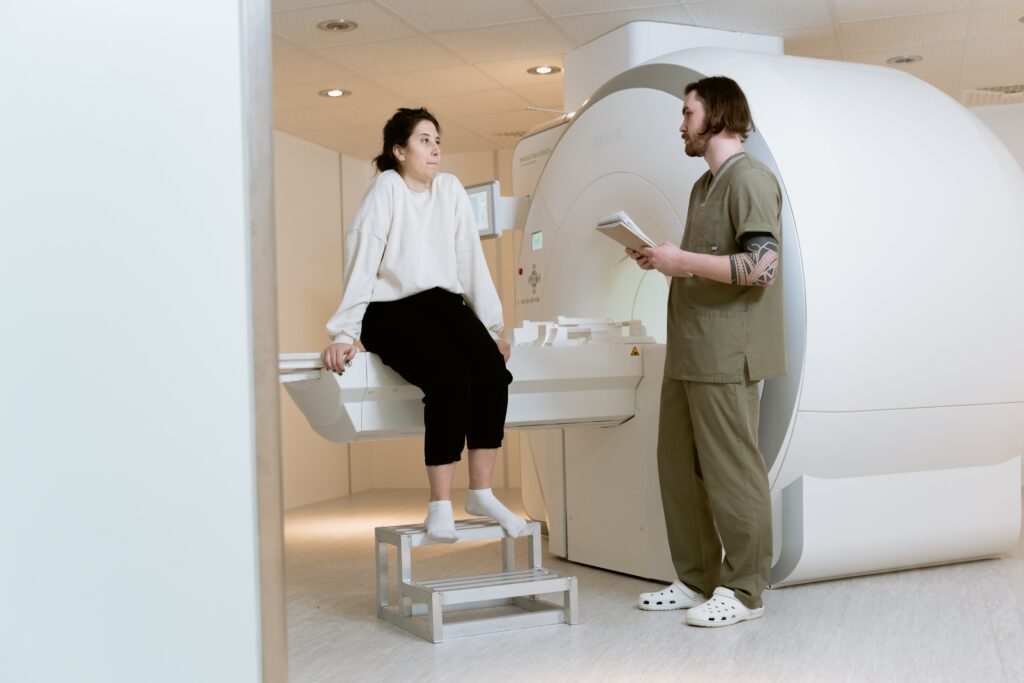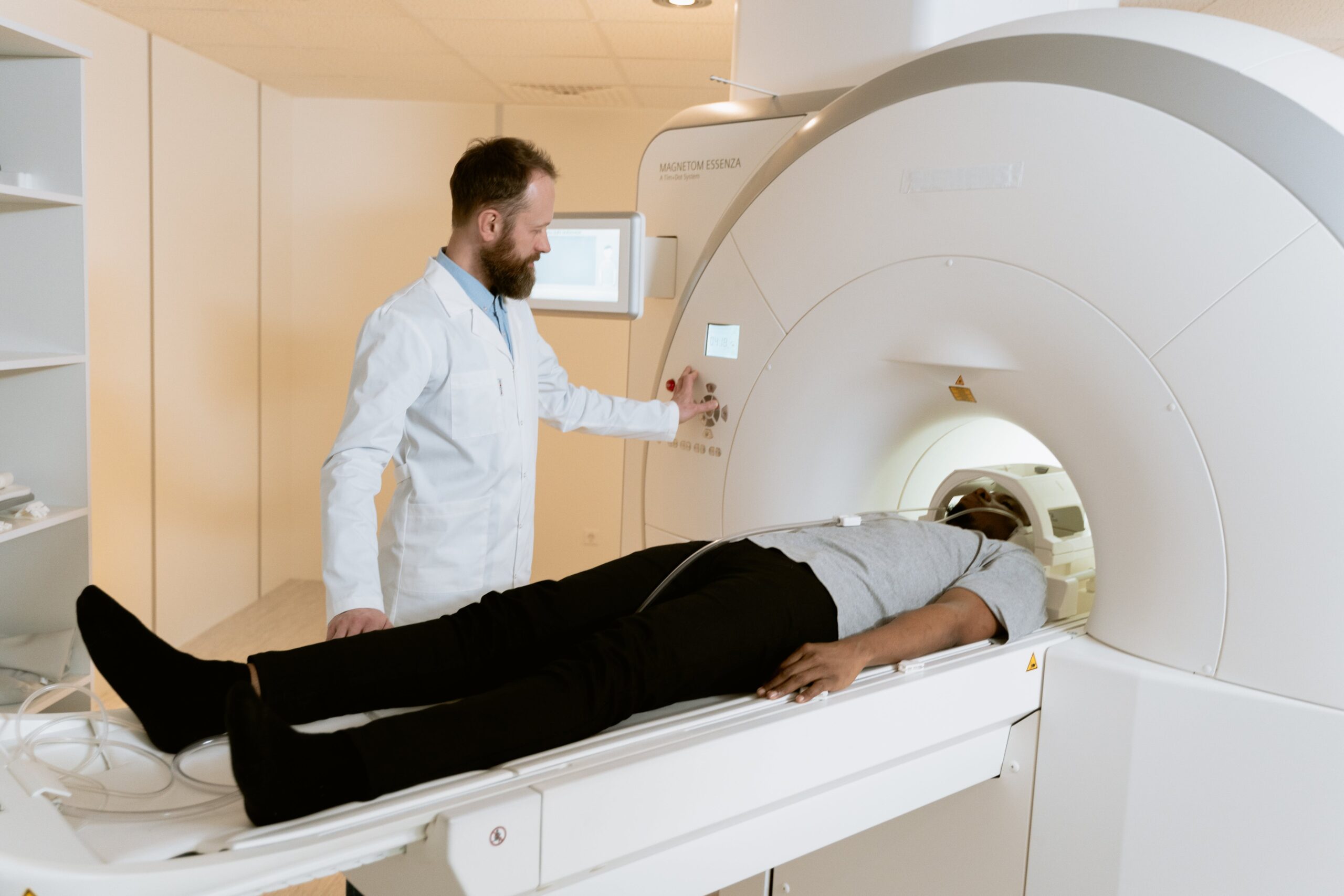Computed tomography can also be identified as a medical imaging procedure. That is used to create detailed cross-sectional images of the body. It can diagnose certain medical conditions and assess any abnormality in your body. It is interesting to learn the technology used behind this imaging technique. CT scan machine works by rotating an X-ray tube around the patient. The detectors were placed on the opposite side of the x-ray tube. It detects the X-ray beams that pass through your body to create images of cross-sections of your body.
The main limitation is ionizing radiation similar to X-ray imaging, which can be harmful when used repetitively. However, the major advantage of this scan is the ability it has to generate images relatively quickly. It is quicker than in other imaging techniques. Also, it can scan the entire body within a few seconds. This makes CT scanning the most ideal imaging to be used during emergencies.
Types of CT Scans
You might have heard that there are several types of CT scans while the main two types are contrast CT and non-contrast CT.
Contrast CT
- Contrast CT scans involve the administration of a contrast agent to get clearer images of certain structures in your body. This contrast medium can be administered orally, intravenously, or retally. The route of administration depends on the area which is planned to be imaged using the scan. The contrast agent commonly used consists of an iodine-based substance. The importance in contrast enhanced CT scanning is that they can be used in the below areas. image blood vessels, tumors, soft tissue organs, infection and inflammation. It will give more precise images than the non-contrast CT scan.
Non-Contrast CT
- Non-contrast CT scans don’t involve the administration of a contrast medium. It only relies on the X-ray images produced by the scanning machines. They are used in incidents where contrast medium is not indicated. This type can be useful to asses bone fractures, and evaluate acute bleeding inside the skull and brain. As well as to detect kidney stones and monitor previously diagnosed conditions such as known tumors, abscesses, and chronic diseases.
Why are CT Scans Done?
- CT scans are most commonly used in emergencies to assess injuries and trauma. This can provide rapid images to build up a plan of management in such incidents.
- It is also important to diagnose abdominal and pelvic conditions such as appendicitis, diverticulitis, gastrointestinal tract bleeding, liver disease, etc.
- To diagnose and monitor chest and lung conditions such as lung cancers, pneumonia, etc,
- CT angiography is an important and useful imaging method for the assessment of blood vessels and to diagnose cardiovascular conditions especially in coronary arteries.
- CT scans of the brain are commonly used to evaluate strokes, brain tumors, head trauma, bleeding inside the skull or brain, and brain infections.
- Staging cancers and determining how far the cancers have spread is commonly done by using CT scans.
- CT can also be used to guide minimally invasive procedures such as taking biopsies and placing drains and aspirations.
How Should You Prepare for a CT Scan?
- You need to follow a few important steps to make yourself ready to undergo this imaging technique to generate a successful imaging.
- You must follow all the instructions given to you by your medical officer.
- You must also inform your medical officer regarding any medical conditions or allergies you have and the surgeries you have undergone. For example, implanting metallic valves, pacemakers, aneurysm clips, etc. Because these metallic parts inside your body can affect the images produced during CT scans.
- You must inform if you are pregnant or breastfeeding as x-ray radiation used in CT scanning can have effects on the baby. In such conditions, your medical officer will decide whether to get the CT scan done or to consider other alternative methods.
- Normally you don’t need to remain fasting before the non-contrast CT scans. But sometimes if you are undergoing an abdominal CT, pelvic CT or a contrast CT scan your medical officer will ask you to avoid taking food and drinking for a certain period before the procedure. Because of that, it is important to ask about the intake of food from your medical officer before the procedure and follow the instructions accordingly.
Clothing
- Your clothing can affect the quality of images produced. Hence it is important to wear comfortable loose clothing without any metal objects as zippers and buttons. Sometimes you will be advised to change into a hospital gown which is provided to you before the test.
- You will have to remove any jewelry, belts, watches, hair pins, eyeglasses, and such objects in your body that can interfere with the image quality before the test.
- Also, if it is a contract-enhanced – CT you will have some other special preparation steps to follow. Which are not followed in normal CT imaging. You will have to remain fasting for a certain period and take some special medications to prepare yourself to receive a contrast agent.

What Happens During the Procedure?
- Initially, your medical officer or the imaging technician will assess you for any metallic objects in your body and remove them.
- Next, you will be offered a hospital gown to wear.
- Afterward, you will be provided with relaxation methods such as sedation if you are feeling anxious. You will have to lie on a table. It will move into the scanning machine which has a bore where you will be placed during the procedure.
- Usually, you will have to lie in the face-down position while placing the area that needs to be scanned in the center of the machine.
- There will be an adequate cushioned surface in this table to support you to remain still and comfortable.
- The technologist will contact you from the nearby control room by giving instructions. You will have the facility to let the technician know about any of your concerns during the procedure.
- You will also be visualized throughout the scan by a video camera and monitored by the staff in the control room.
- The table you are lying on will slightly move during the procedure to get the best quality images.
- The most significant responsibility you have during the procedure is remaining still and immobile as it is very important to generate a clear image.
- Normally the duration of an MRI scan can vary, but usually, it will end up within a few minutes.

What are the Limitations of CT Scans?
- The main limitation is the use of ionizing radiation as it can have harmful effects on cells and tissues of your body. The risk that you can have from a single scan is much less. But if you get repetitive exposure, it can have harmful effects and develop complications. This risk can be high for pregnant women and their babies. Hence special precautions need to be taken for them if they have to undergo this type of test.
- Unlike MRI scans and ultrasound scans, CT imaging can’t capture live or functional images. Hence, they provide fewer details regarding how organs are functioning. They only provide static images of structures inside of your body.
- Although bones, blood vessels, and dense tissue can be well visualized using CT scans, differentiation of some soft tissue organs can be difficult. Some people have allergies to contrast agents. Also, there are some medical conditions as kidney diseases where the administration of contrast mediums is contraindicated. In such cases, this scanning can’t be done which is another limitation that can be identified.

